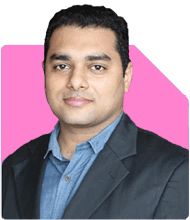Should I retire at 55? I have crores in property and hefty savings.
Ramalingam Kalirajan |10899 Answers |Ask -Follow
Mutual Funds, Financial Planning Expert - Answered on Mar 24, 2025
He has an MBA in finance from the University of Madras and is a certified financial planner.
He is the director and chief financial planner at Holistic Investment, a Chennai-based firm that offers financial planning and wealth management advice.... more

Dear Sir, I am 55-year-old corporate executive working in Delhi NCR. I own 3 house properties amounting to approx. INR 4 crores. Apart from these, I have PF of 45 lacs, PPF of 32 lacs, NPS of 40 lacs. I also have around INR 32 lacs in MFs & Equity, 30 lacs in FDs. My first child is studying engineering for which the expenses are around INR 2.5 lacs per annum while my second child would be going to college from next year. My monthly expenses are around 2 lacs. Am I in a position to retire ? Regards, SB
Current Financial Position
Liquid Assets (Available for Retirement)
Provident Fund (PF) – Rs. 45L
PPF – Rs. 32L
NPS – Rs. 40L
Mutual Funds & Equity – Rs. 32L
Fixed Deposits – Rs. 30L
Total Liquid Assets = Rs. 1.79 Cr
Illiquid Assets (Not Considered for Regular Retirement Income)
Three House Properties – Rs. 4 Cr (Not included in the retirement corpus)
Liabilities and Key Expenses
Child 1 Education – Rs. 2.5L per annum (Few years remaining)
Child 2 College Fees – Future cost needs to be set aside
Monthly Household Expenses – Rs. 2L (Post-retirement, this will continue)
Key Factors for Retirement Decision
1. Corpus Required for Retirement
Your monthly expense is Rs. 2L, meaning Rs. 24L per year.
Inflation will increase this every year.
Your investments should generate income without depleting the principal too soon.
2. Children's Higher Education
Your elder child is already in college.
Your younger child will start college next year.
Education costs will impact your retirement savings.
3. Passive Income from Investments
Your NPS will provide a pension, but a portion must be annuitized.
PPF and PF can be used for systematic withdrawals.
FDs provide low returns and are taxable.
Mutual funds and equity investments can generate better returns with a structured withdrawal plan.
4. Withdrawal Strategy for Sustainability
Your corpus should last for at least 25-30 years after retirement.
Withdrawals should be planned to reduce tax impact.
A Systematic Withdrawal Plan (SWP) from mutual funds can provide regular cash flow.
Are You Ready to Retire?
Scenario 1: If You Retire Now (55 Years Old)
Your liquid assets may not sustain a Rs. 2L monthly expense for 30+ years.
Education expenses will add financial pressure.
You will need higher growth investments to support long-term needs.
Scenario 2: If You Work for 3-5 More Years
Your corpus can increase by Rs. 1.5 Cr - Rs. 2 Cr, strengthening financial security.
You can fully fund children's education before retirement.
Your investments will have a longer growth period before withdrawals begin.
You will have a better buffer against inflation and unexpected expenses.
Retirement Plan Recommendations
1. Postpone Retirement for 3-5 Years
This will ensure a more secure retirement.
Your corpus will have more time to grow.
2. Adjust Investment Portfolio for Stability
Increase exposure to balanced and hybrid funds.
Reduce dependency on FDs, as they provide low post-tax returns.
Retain some equity investments for long-term growth.
3. Secure a Tax-Efficient Withdrawal Plan
Plan gradual withdrawals from PF, PPF, and mutual funds.
Use Systematic Withdrawal Plans (SWP) to maintain tax efficiency.
Consider phased NPS withdrawals to manage tax liability.
4. Reassess Expenses and Future Goals
Reduce discretionary expenses if required.
Ensure you set aside emergency funds for health and other needs.
Maintain adequate health insurance to prevent medical expenses from impacting retirement savings.
Final Insights
Retiring now may put pressure on your finances due to education costs.
Working for 3-5 more years can improve financial stability.
A structured withdrawal plan will ensure your corpus lasts for 30+ years.
Investment allocation should be adjusted for a mix of growth and stability.
A well-planned retirement ensures financial freedom without compromising lifestyle.
Best Regards,
K. Ramalingam, MBA, CFP,
Chief Financial Planner,
www.holisticinvestment.in
https://www.youtube.com/@HolisticInvestment
You may like to see similar questions and answers below
Ramalingam Kalirajan |10899 Answers |Ask -Follow
Mutual Funds, Financial Planning Expert - Answered on Oct 26, 2024
Ramalingam Kalirajan |10899 Answers |Ask -Follow
Mutual Funds, Financial Planning Expert - Answered on Jan 02, 2025
Ramalingam Kalirajan |10899 Answers |Ask -Follow
Mutual Funds, Financial Planning Expert - Answered on Jan 21, 2025
Ramalingam Kalirajan |10899 Answers |Ask -Follow
Mutual Funds, Financial Planning Expert - Answered on May 14, 2025
Samraat Jadhav |2511 Answers |Ask -Follow
Stock Market Expert - Answered on Dec 17, 2025
Ravi Mittal |678 Answers |Ask -Follow
Dating, Relationships Expert - Answered on Dec 17, 2025
Reetika Sharma |427 Answers |Ask -Follow
Financial Planner, MF and Insurance Expert - Answered on Dec 17, 2025
Purshotam Lal |68 Answers |Ask -Follow
Financial Planner, MF and Insurance Expert - Answered on Dec 17, 2025
Ramalingam Kalirajan |10899 Answers |Ask -Follow
Mutual Funds, Financial Planning Expert - Answered on Dec 17, 2025
Ramalingam Kalirajan |10899 Answers |Ask -Follow
Mutual Funds, Financial Planning Expert - Answered on Dec 17, 2025
Ramalingam Kalirajan |10899 Answers |Ask -Follow
Mutual Funds, Financial Planning Expert - Answered on Dec 17, 2025
Ramalingam Kalirajan |10899 Answers |Ask -Follow
Mutual Funds, Financial Planning Expert - Answered on Dec 17, 2025
Ramalingam Kalirajan |10899 Answers |Ask -Follow
Mutual Funds, Financial Planning Expert - Answered on Dec 17, 2025
Mayank Chandel |2576 Answers |Ask -Follow
IIT-JEE, NEET-UG, SAT, CLAT, CA, CS Exam Expert - Answered on Dec 17, 2025


























